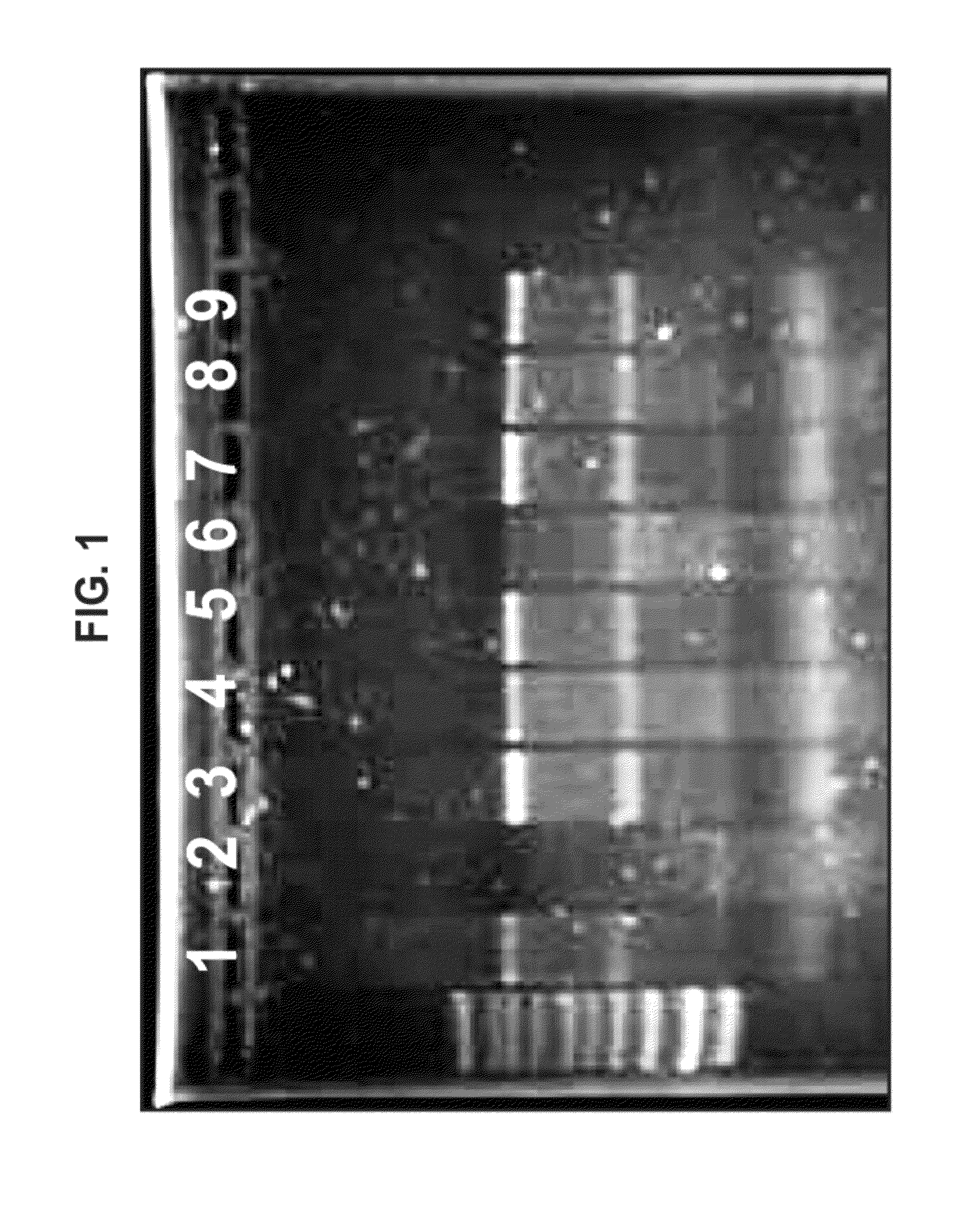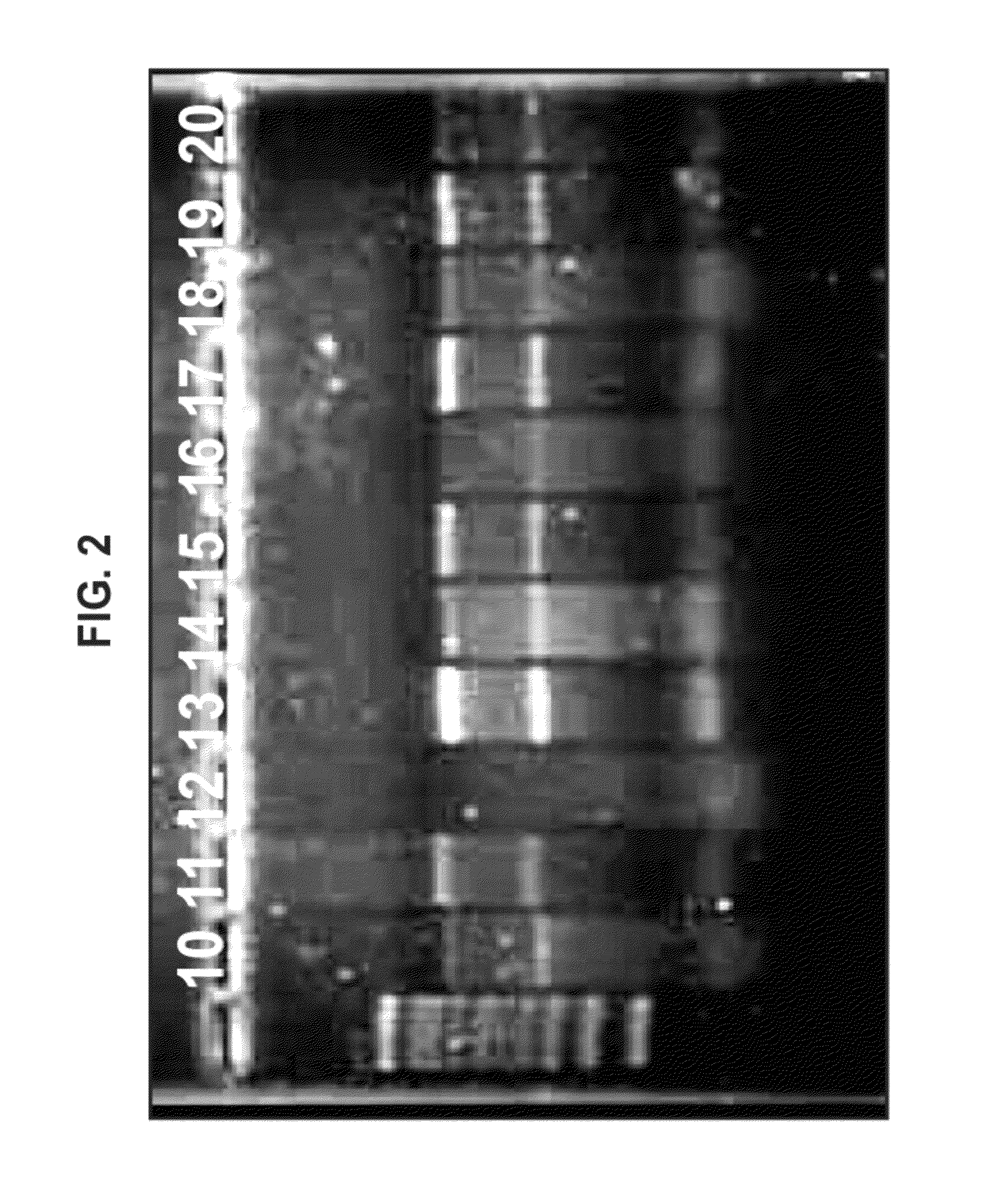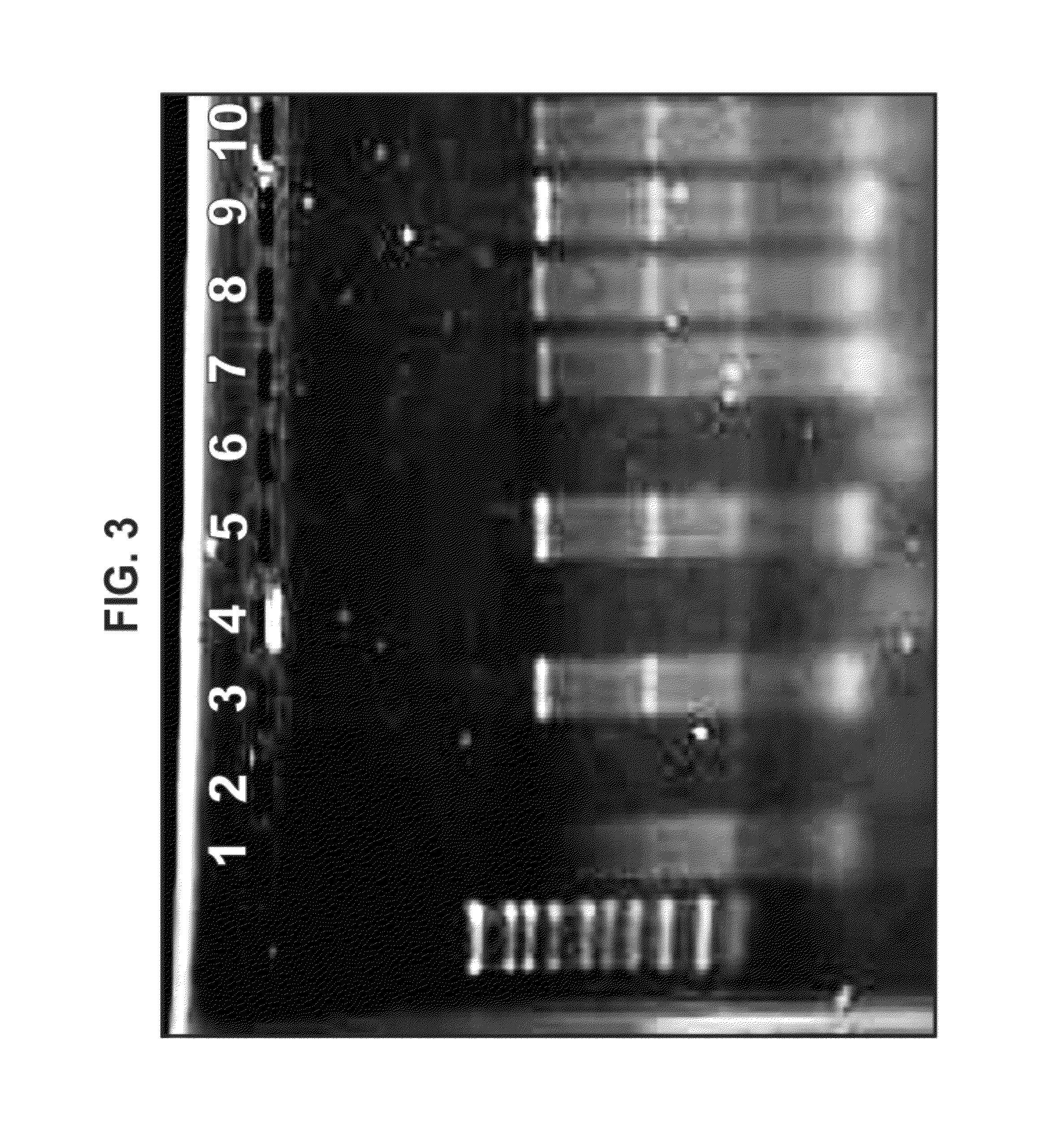Cationic oil-in-water emulsions
a technology of cationic oil and water, applied in the field of cationic oil in water emulsions, can solve the problems of increasing cytotoxic effects or loss of or decreasing function of nucleic acid molecules, large doses of nucleic acid are generally required, and rna molecules face a number of technical hurdles, so as to improve the stability of negatively charged molecules, promote particle formation, and improve the effect of complexation
- Summary
- Abstract
- Description
- Claims
- Application Information
AI Technical Summary
Benefits of technology
Problems solved by technology
Method used
Image
Examples
example 1
Development of Cationic Oil-in-Water Emulsions
[0332]Three types of cationic nanoemulsions (CNEs) were developed for the delivery of self replicating RNA. Type 1 emulsions are “MF59” like emulsions. These emulsions were made from the same components of MF59 with the exception that cationic lipids are added. Type 2 emulsions are emulsions that replace the Span 85 and Tween 80 in MF59 with phospholipids. Type 3 emulsions are hybrid emulsions that are stabilized by either lipids or other surfactants and can have additional polymers or surfactants in the aqueous phase of the emulsion.
[0333]Three different lipids were used in the preparation of Type 1 emulsions: 1,2-dioleoyl-3-trimethylammonium-propane (chloride salt) (DOTAP), 3β-[N—(N′,N′-dimethylaminoethane)-carbamoyl]cholesterol hydrochloride (DC Cholesterol) and Dimethyldioctadecylammonium (Bromide Salt) (DDA). DOTAP was used in the preparation of Type 2 and Type 3 emulsions.
[0334]The term N / P ratio refers to the amount of nitrogen in...
example 2
Preparing RNA-Particle Complexes
1. Materials and Methods.
RNA Synthesis
[0348]Plasmid DNA encoding an alphavirus replicon (self-replicating RNA) was used as a template for synthesis of RNA in vitro. Each replicon contains the genetic elements required for RNA replication but lacks sequences encoding gene products that are necessary for particle assembly. The structural genes of the alphavirus genome were replaced by sequences encoding a heterologous protein (whose expression is driven by the alphavirus subgenomic promoter). Upon delivery of the replicons to eukaryotic cells, the positive-stranded RNA is translated to produce four non-structural proteins, which together replicate the genomic RNA and transcribe abundant subgenomic mRNAs encoding the heterologous protein. Due to the lack of expression of the alphavirus structural proteins, replicons are incapable of generating infectious particles. A bacteriophage T7 promoter is located upstream of the alphavirus cDNA to facilitate the s...
example 3
Assessing Protein Expression Levels Using Different Oils
[0384]A series of emulsions were made using different oils but within the base formulation of CNE17, i.e., 5% oil, 0.5% Tween 80, 0.5% span 85 and 1.4 mg / ml DOTAP. Table 12 below outlines the changes in oils for each of the groups. Classifications of the oils are also listed in Table 12.
[0385]The emulsions were tested at a 10:1 N / P ratio and was complexed as previously described. BALB / c mice, 5 animals per group, were given bilateral intramuscular vaccinations (50 μL per leg) on day 0 with VRP's expressing SEAP (5×105 IU), naked self-replicating RNA (A306, 1 μg), self-replicating RNA delivered using electroporation (A306+EP, 1 and 0.1 μg) and self-replicating RNA formulated with CNE36, CNE37, CNE38, and CNE41 produced as previously described (1 μg A306). Serum SEAP levels (relative light units, RLU) on days 1, 3 and 6 after intramuscular vaccination on day 0 are shown in Table 13. Data are represented as arithmetic mean RLUs of...
PUM
 Login to View More
Login to View More Abstract
Description
Claims
Application Information
 Login to View More
Login to View More - R&D
- Intellectual Property
- Life Sciences
- Materials
- Tech Scout
- Unparalleled Data Quality
- Higher Quality Content
- 60% Fewer Hallucinations
Browse by: Latest US Patents, China's latest patents, Technical Efficacy Thesaurus, Application Domain, Technology Topic, Popular Technical Reports.
© 2025 PatSnap. All rights reserved.Legal|Privacy policy|Modern Slavery Act Transparency Statement|Sitemap|About US| Contact US: help@patsnap.com



